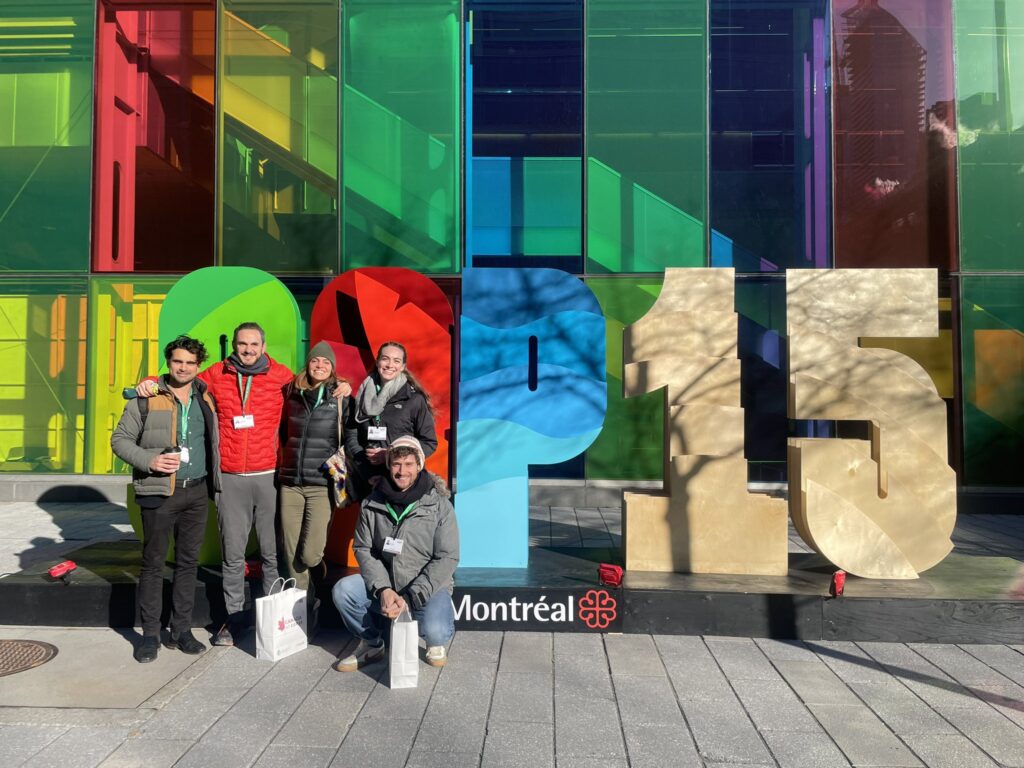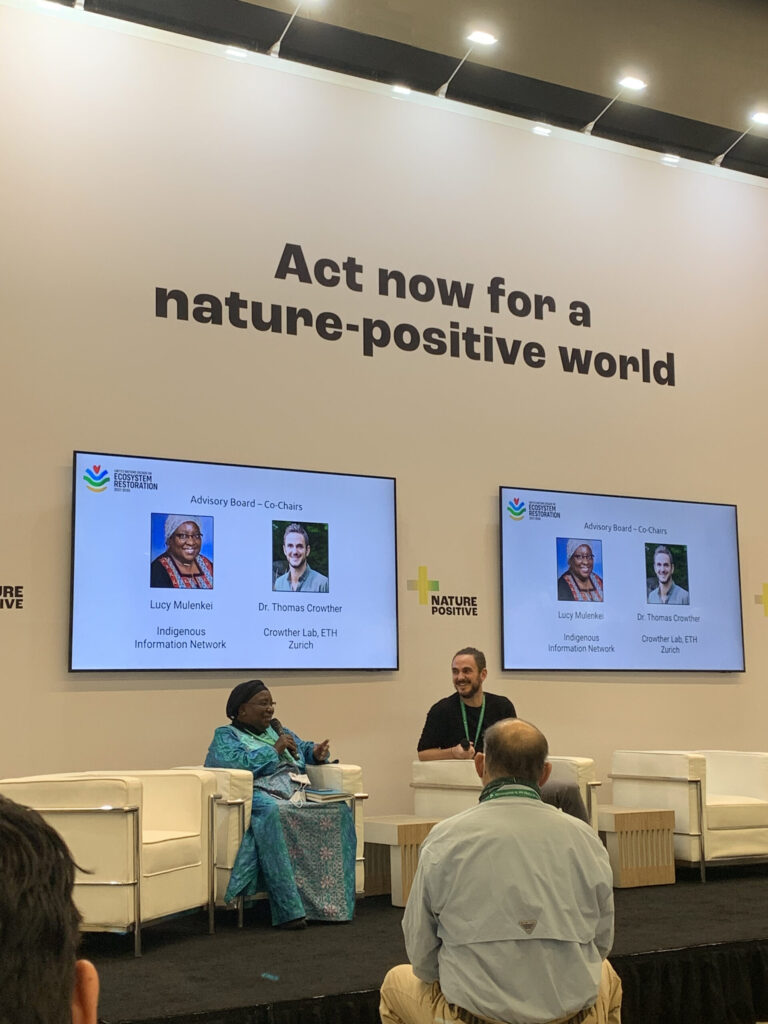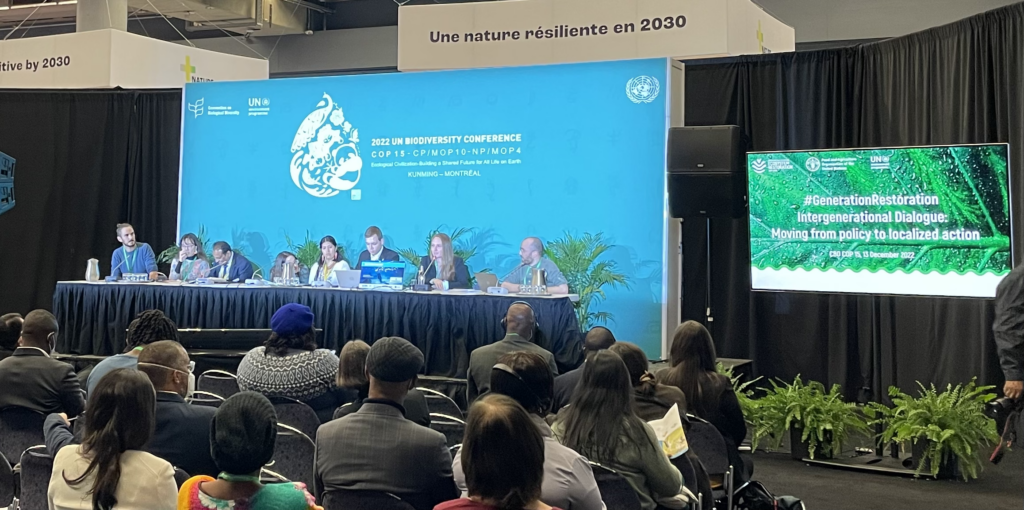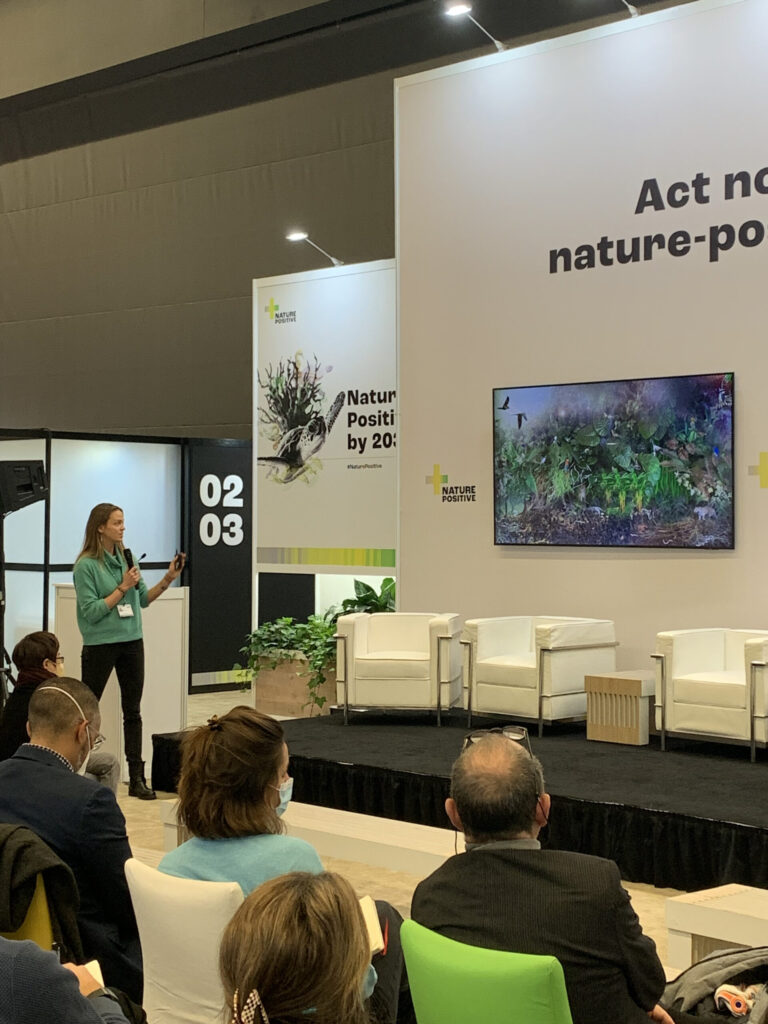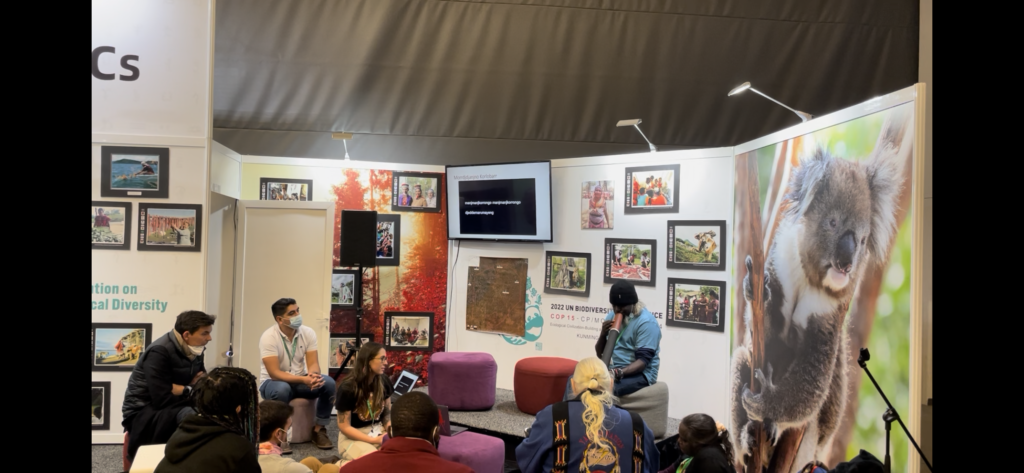In December 2022, a small delegation from the Crowther Lab at ETH Zurich attended COP15 in Montreal, where the Post-2020 Global Biodiversity Framework was finally established.
COP15 in Montreal: Pretty Words on Biodiversity Must Now Make Way for Action
Ian Brettell, 9 February 2023
After practising law in Australia for several years and then completing a PhD in genetics in the UK, I recently landed the role of Biodiversity Policy Officer in the Crowther Lab at ETH Zurich, where I will be seeking to translate the latest biodiversity research into real-world outcomes. The 15th Conference of the Parties (COP) for the UN Convention on Biodiversity in Montreal – which ran for 2 weeks in December 2022 – was the perfect opportunity to meet some of my new colleagues in person for the first time, while observing how these global agreements are formed.
The negotiations work like this: Each nation’s delegates fill a large room with a giant projector screen displaying a word document that is being edited in real time. Nation X gets on their microphone and says something to the effect of, ‘This is Nation X. In the second sentence we would like to strike out the second comma and add the words “and nature-based solutions”’. The chairperson would make those changes to the word document on the projector. Nation Y would respond with something to the effect of, ‘This is Nation Y. We are no longer happy with this provision, and now we want the entire paragraph struck out.’ The chairperson would then say something like, ‘Come on now, Nation Y, we’ve just spent the last few hours going over it, and everyone else is fairly happy with it, so let’s just move on, shall we?’ Nation Y reluctantly acquiesces, and they move onto the next provision. With 23 targets in the framework, it is no wonder the negotiations ran overtime.
Ultimately, the parties to the COP did agree to an ambitious set of biodiversity targets now known as the Kunming-Montreal Global Biodiversity Framework (GBF), with the headline ‘30x30’ target of protecting 30% of the world’s land and oceans by 2030. Conservation is the cornerstone of the biodiversity movement, but the challenge now will be how to implement the target at scale. Other notable 2030 targets include restoring 30% of degraded ecosystems, removing environmentally harmful subsidies by at least $500bn, and a pledge from developed countries to mobilise $30bn of funding for developing countries. However, the push to embed the phrase ‘nature positive’ (conceived as the biodiversity analogue to ‘net zero’) in the GBF ultimately failed due to concerns that it could be co-opted for greenwashing.
Concurrent to these negotiations were hundreds of smaller side events attended by leaders from civil society, the private sector, and popular culture. These events provided wonderful opportunities to meet many other groups and individuals who are deeply passionate about protecting biodiversity, and enthusiastic about working together towards this common goal. In particular, I felt the optimism building around the UN Decade on Ecosystem Restoration as they announced their 10 massive and influential flagship projects that are collectively protecting and restoring 68 million hectares of land. That is especially exciting from our perspective, as Restor (an ETH spin-off) will be monitoring these flagships, which is a huge step towards improving transparency for the global biodiversity movement. Altogether, this COP generated a lot of momentum around the need to protect and restore nature. The challenge now will be to convert these aspirations into effective actions.
About the Author

Ian Brettell
Ian is the Biodiversity Policy Officer in the Crowther Lab at ETH Zurich. The Crowther Lab is studying global ecosystems and generating knowledge to protect biodiversity and address climate change at the Department of Environmental Systems Science at ETH Zurich. You can follow Ian on twitter.


